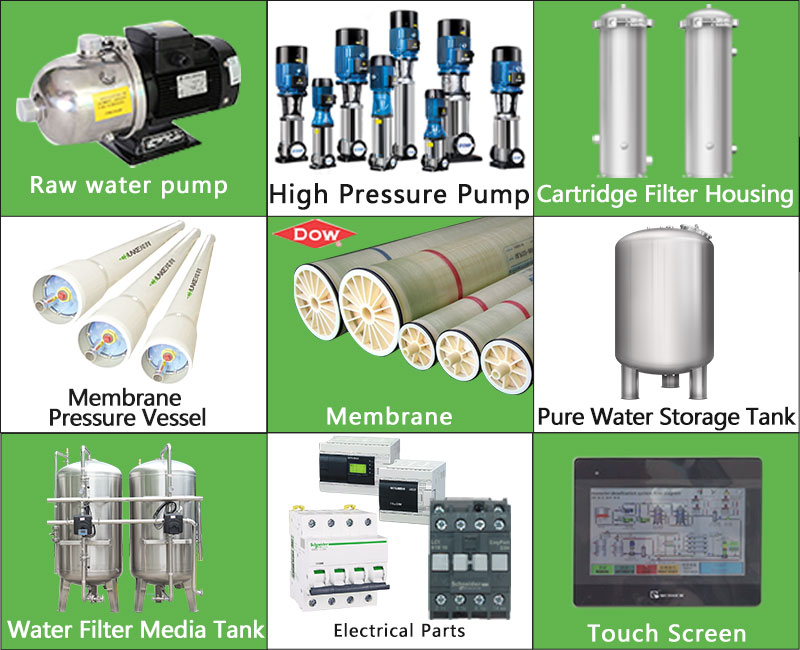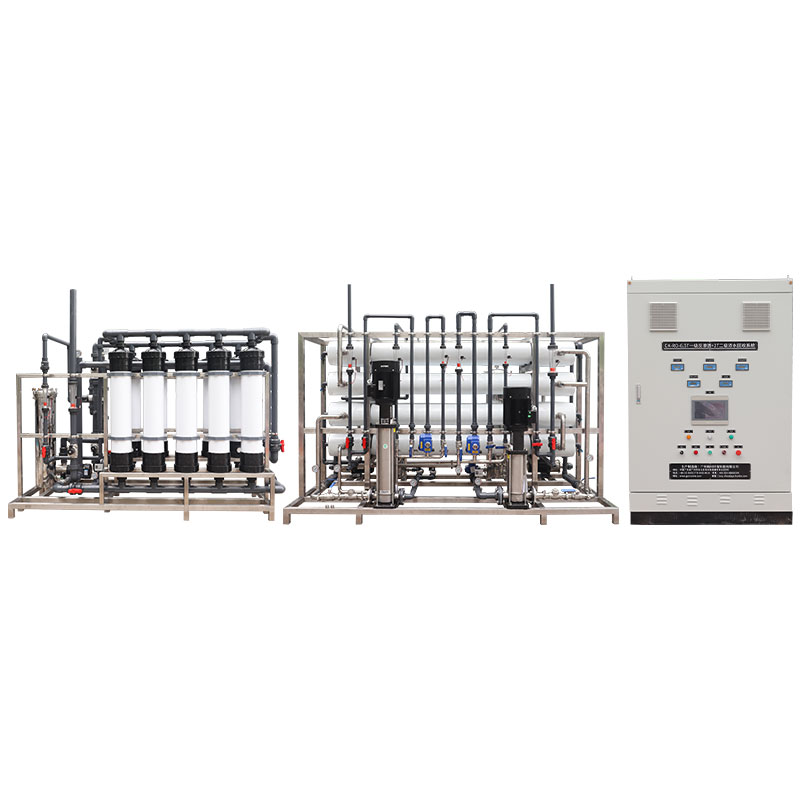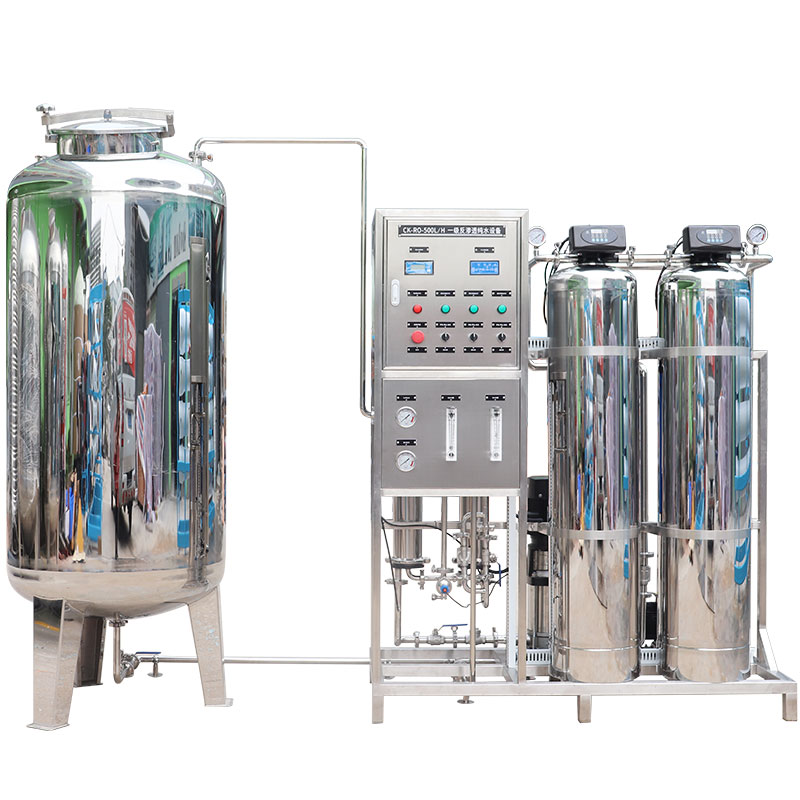What kind of water filter can filter out chlorine and fluoride?

Water quality safety is an important part of people's lives that cannot be ignored. Chlorine and fluoride are two common chemical components in daily drinking water. Although they have played a positive role in public health to a certain extent, their excessive presence may pose a potential threat to human health.
Therefore, choosing a suitable water filter to effectively remove chlorine and fluoride has become the focus of many people's attention. This article will explore in detail what kind of water filter can filter out chlorine and fluoride, and analyze its specific working principle and applicability.
The source and impact of chlorine and fluoride in water
Chlorine, as a strong oxidant, is widely used in the disinfection process of water treatment plants to kill bacteria, viruses and other microorganisms in water. However, chlorine residues, such as trihalomethanes (THMs), are considered potential carcinogens. In addition, the taste and smell of chlorine can also affect the taste of drinking water.
Long-term drinking of water with high chlorine content may cause irritation to the respiratory and digestive tracts and increase the risk of certain cancers. Therefore, removing chlorine residues in drinking water has become a need for many families.
Fluoride is often added to tap water to help prevent tooth decay. Although low doses of fluoride are good for teeth, excessive intake can lead to health problems such as dental fluorosis and even osteoporosis. The fluoride content in natural water sources varies from region to region, and some areas have higher levels of fluoride in natural water sources, further increasing the need for fluoride removal.

What kind of water filter can filter out chlorine and fluoride?
Different types of water filters perform differently in removing chlorine and fluoride. Understanding the working principle and performance of each filter will help you choose the best filter for home or commercial use.
1. Activated carbon filter
Activated carbon filter is one of the most common household water filters and is widely used to remove chlorine and organic pollutants from water. Activated carbon has a large surface area and can remove impurities from water through adsorption. When water flows through the activated carbon filter element, chlorine molecules are adsorbed by the surface of the activated carbon and are removed.
Advantages:
● Efficient removal of chlorine: Activated carbon filters have a chlorine removal rate of more than 90%, which can significantly improve the taste and odor of water.
● Economical and practical: Due to its relatively low cost and simple maintenance, activated carbon filters have become the first choice for home use.
Limitations:
● Ineffective against fluoride: Activated carbon filters have little effect on the removal of fluoride and need to be combined with other filtration technologies.
2. Reverse Osmosis (RO) System
The reverse osmosis system is another common water purification equipment, widely used in households and industrial fields, with the ability to remove chlorine and fluoride. The reverse osmosis system applies pressure to force water molecules to pass through a semi-permeable membrane, while impurities such as chlorine and fluoride are trapped on the other side of the membrane and removed.
Advantages:
● Efficient fluoride removal: The reverse osmosis system can remove more than 90% of fluoride, suitable for families who want to completely remove fluoride from the water.
● Broad-spectrum purification: In addition to chlorine and fluoride, the reverse osmosis system can also remove heavy metals, salts and other dissolved solids in the water.
Limitations:
● High water consumption: The reverse osmosis system will produce a certain amount of wastewater during the water purification process, and usually requires a larger water supply.
● High maintenance cost: The filter element and membrane of the reverse osmosis system need to be replaced regularly, which increases the cost of long-term use.
3. Distiller
The distiller is a device that purifies water by heating and condensing, which can effectively remove chlorine and fluoride from water. Water is heated to boiling point in the distiller, and the water vapor is condensed into liquid water, while impurities such as chlorine and fluoride are left in the evaporator and removed.
Advantages:
● Complete removal of fluoride: Distillation is one of the most thorough water purification methods and can remove almost all fluoride.
● Wide applicability: The distiller is suitable for a variety of water sources and can remove bacteria, viruses, heavy metals and other dissolved solids in water.
Limitations:
● High energy consumption: The distillation process requires a lot of energy to heat the water, so the operating cost is high.
● Slow speed: The water purification speed of the distiller is slow and it is difficult to meet the demand for large-volume water.
4. Ion exchange filter
Ion exchange filters are mainly used to remove ionic compounds in water, especially hardness ions (such as calcium and magnesium) and fluoride. Water passes through an ion exchange resin bed, where the sodium ions in the resin are exchanged with calcium, magnesium, and fluoride ions in the water, thereby removing fluoride.
Advantages:
● Fluoride removal: Ion exchange filters are effective in removing fluoride from water, and are particularly suitable for areas with high fluoride content.
● Improved water quality: In addition to removing fluoride, ion exchange filters can also soften water, improving the taste and performance of water.
Limitations:
● Ineffective against chlorine: Ion exchange filters have poor chlorine removal effects and are usually combined with activated carbon or other technologies.
● Regeneration required: Resins need to be regenerated or replaced regularly to maintain filtration effects, increasing the complexity of maintenance.

Integrated filtration systems: a multi-layer filtration solution
Single filtration technology often has limitations in removing chlorine and fluoride, so many families choose integrated filtration systems, which combine multiple filtration technologies to achieve more comprehensive water purification. Integrated filtration systems typically include multiple filter cartridges and filter units, each of which filters for specific contaminants. For example, activated carbon filters are used to remove chlorine, reverse osmosis membranes are used to remove fluoride, and ion exchange resins are used to further remove other ionic contaminants in the water.
Advantages of integrated filtration systems
● Comprehensive purification: The integrated filtration system can remove chlorine and fluoride at the same time, providing a more comprehensive water purification effect.
● High flexibility: Users can choose and configure different filters according to water quality and needs to achieve the best water purification effect.
Limitations of integrated filtration systems
● Complex installation: Integrated filtration systems usually require professional installation, and the system setup and commissioning are relatively complex.
● High cost: Due to the inclusion of multiple filter cartridges and filter units, the initial purchase cost and maintenance cost of the integrated filtration system are both high.
What are the key factors in choosing the right water filter?
When choosing a water filter that can remove chlorine and fluoride, it is necessary to consider that the water quality in different regions varies greatly, and the content of chlorine and fluoride is also different. Before choosing a filter, it is recommended to conduct a water quality test to determine the specific content of chlorine and fluoride in the water. This helps to choose the most suitable filter type.
Secondly, the household's water consumption and purpose are also important reference factors for choosing a filter. For homes that need a lot of drinking water, a reverse osmosis system may be more suitable. For homes that use it mainly for cooking and drinking, an activated carbon filter may be more economical and practical.
In addition, the cost and maintenance requirements of different filters vary greatly. Reverse osmosis systems and distillers have higher initial costs and maintenance costs, but the filtering effect is more comprehensive. Activated carbon filters are lower in cost and simpler to maintain, but their effect on fluoride removal is limited.
Finally, consider that some filters may produce wastewater or require chemical regeneration during the water purification process, so health and environmental factors should also be considered when choosing. For example, reverse osmosis systems produce more wastewater, while ion exchange filters require the use of regeneration agents, which may have an impact on the environment.

Common Misconceptions and Precautions
When choosing and using water filters, many people tend to fall into some common misconceptions. Understanding these misconceptions can help you better choose and use filters.
1. Myth: All water filters can remove fluoride
The fact is that only certain types of water filters, such as reverse osmosis systems, distillers, and ion exchange filters, can effectively remove fluoride. Ordinary activated carbon filters are almost ineffective against fluoride.
2. Myth: All RO systems are the same
The quality and performance of RO systems vary by brand and model. When purchasing, pay attention to factors such as membrane quality, system wastewater ratio, and additional filter unit configuration.
3. Myth: Filters do not require maintenance
Any water filter requires regular maintenance and filter element replacement to ensure its long-term effective operation. Neglecting maintenance will result in reduced filtration effectiveness and may even cause secondary contamination.




